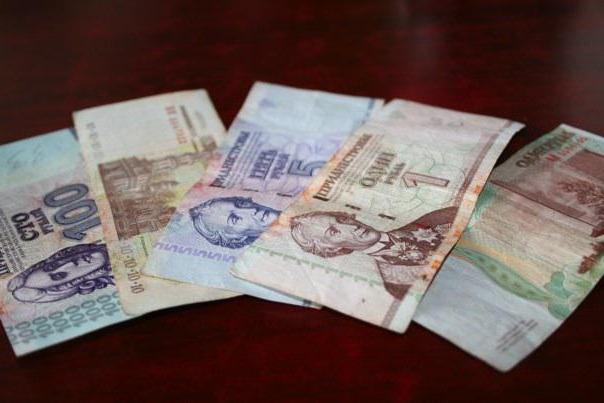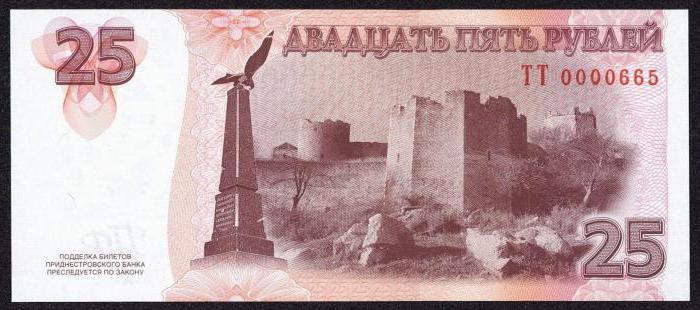Each country, even if it is not recognized by the world, has its own money. The Transnistrian currency is represented by banknotes and coins of various denominations. It was established in August 1994 and even has its own symbol. Read about the features of the Transnistrian currency in this article.
Transnistrian currency and its brief history
The currency of the Pridnestrovian Moldavian Republic (abbreviated as PMR) does not have its own international code (since the state is unrecognized), although it is indicated by the abbreviation PRB. Currency name: Transnistrian ruble. It has been leading its history since 1994.
In the first years of its independence, the PMR used the old bank notes of the USSR, and then of Russia. Here, the Transnistrians did not invent the “bicycle”, since the Czech Republic and Slovakia solved their financial problems in this way after the Velvet Revolution. Only on August 17, 1994, a new currency was introduced on the territory of the unrecognized state - the Transnistrian ruble.
Initially, banknotes were printed (and coins were minted) abroad. In autumn 2005, the Transnistrian currency acquired its own Mint, which is located in Tiraspol.

In 2007, banknotes in the PMR were modernized: new security elements appeared on them.
Transnistria money: banknotes and coins
The currency of Transnistria is represented by banknotes of the following denominations: 1, 5, 10, 25, 50, 100, 200, and 500 rubles. The first version of banknotes was in use until 1998. The obverse of all banknotes was decorated with Alexander Suvorov (either his portrait or the image of the commander’s equestrian monument in the city of Tiraspol).
In 2000, the bank of the republic issued a new type of banknote. On them, in addition to the prominent Russian commander, other personalities appeared: Catherine II, Taras Shevchenko and Moldavian ruler Dmitry Kantemir. In 2007, the Transnistrian Bank issued banknotes with new security features. They go in parallel with the old, but the latter are gradually withdrawn from circulation.

Coins of Transnistria have the following denominations: 5, 10, 25, 50 kopecks, as well as 1, 3, 5, and 10 rubles. Since 2005, they have been minted in the PMR.
Commemorative coins are issued periodically in Transnistria. Most often, they are dedicated to some significant anniversaries and events (for example, the coin “50 years of the Moldavian state district power station” or “70 years of the Yasso-Kishinev operation”). Their circulation is small and does not exceed 250 pieces.
In 2014, two very interesting coins were issued in the PMR. On one of them is a lily, and on the other - the Novo-Nyametsky monastery in the village of Kitskan - the most famous sacred monument of Transnistria.
Sign symbol of the Transnistrian ruble
In 2012, the Transnistrian ruble also had its own sign. It is a combination of two italic letters - "P" and "P". The author of the sign was Belarusian Yuri Kolodny. For the development of the symbol, he received a cash bonus of $ 500 from the Transnistrian Bank.
In the summer of 2014, at the entrance to the republican bank, a monument to the state currency was erected. Its author was Evgeny Vazhev. The monument itself was made at the local Kirov Litmash plant.
The sculpture repeats the symbol of the monetary currency, inside of which there is a bronze coin of one Transnistrian ruble denomination. The total height of the monument is two meters.
Curious facts about the Transnistrian currency
The following are a few interesting facts regarding the state currency of Transnistria:
- there is another (popular) name of the Transnistrian money - “suvoriki”, because in most of the bills (and until the end of the 1990s - absolutely on everyone) it is Alexander Suvorov who is depicted;
- For almost three years (from 2012 to 2015), the Transnistrian ruble was the strongest monetary currency in the entire post-Soviet space (against the backdrop of a general devaluation in neighboring countries, the PMR Bank managed to keep the exchange rate at 11.1 rubles per US dollar);
- on many banknotes of 1994 and 2004, the name of the bank in Ukrainian is written with errors;
- on the obverse of a banknote of 50 Transnistrian rubles denomination depicts the great Ukrainian poet - Taras Shevchenko;
- On November 22, 2014, the PMR Mint struck a commemorative coin with a color image of a plant - lilies; the face value of this coin is 10 rubles;
- on the reverse of a 50-ruble note is the PMR Government House, but ... without a monument to V.I. Lenin, who stands on the square in reality;
- another incident can be found on a banknote of 25 rubles: on the reverse, a monument of Russian glory in Bendery is depicted on the wrong side of the fortress.

Currency exchange (Transnistria): features and nuances
The following banks operate in the PMR: Agroprombank, Sberbank, Eximbank, Tirotex and others. Almost all of them work with plastic cards of various kinds, as well as exchange major world currencies. Banks in Transnistria usually work until 20:00, but ATMs around the clock.
In PMR, you can easily buy local money. At the stands of banks and exchangers, most often you can see a list of five currencies: the euro, the US dollar, the hryvnia, the Moldovan leu and the Russian ruble.

The rate of the Transnistrian ruble (as of November 2015) fluctuates within the following limits: one American dollar can be bought for 11.1 Transnistrian rubles, one euro for 12.2 rubles. The hryvnia and Moldovan leu are about 2 times cheaper than the Transnistrian ruble, and the Russian ruble is almost 6 times cheaper.